Installations and Projects
We have decades of experience creating gardens and wild spaces (among other things)
We no longer install pollinator-friendly habitats, native rain gardens, smaller-scale prairies, vegetable gardens, raised beds, school and community gardens... but we are available as a consulting partner
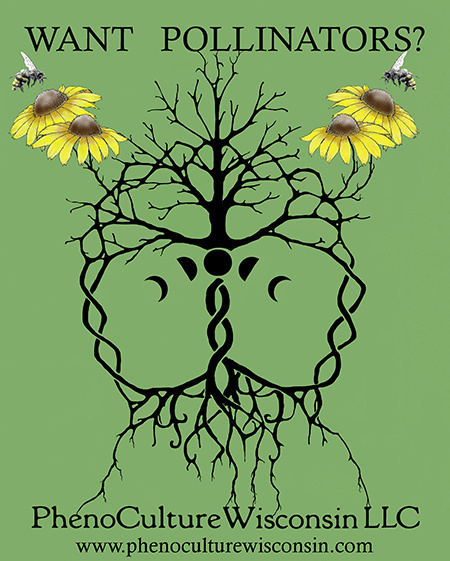
Riverside Middle School Garden (RMSG) - A Real Gem of Our Community
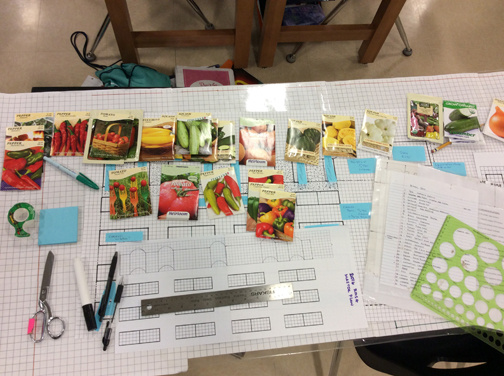
Planning out the beds is an important step in a successful garden
RMSG grew from around 1000 sq feet to 7000 sq feet in four years using grant funding
Our experience saves you time, money and energy when creating large-scale gardens
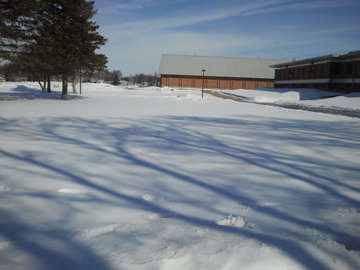
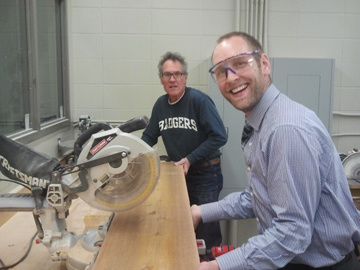
It's sometimes hard to visualize a garden- especially in winter!
Convincing school officials to get on board is the first step. We can show your district administration that a large school garden can supplement the current curriculum, be beautiful AND provide our kids with healthy food
We used red cedar for the raised beds. All the lumber was pre-cut so we were ready for our April workday
We shop locally whenever possible- Zuern Building Products has been a wonderful partner of RMSG!
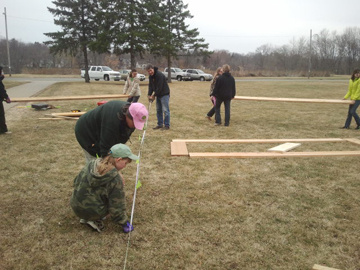
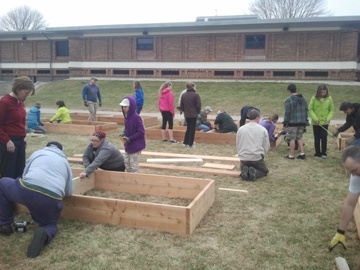
Volunteers arrive and the process of laying out the sixteen beds is underway
Many students had never worked with power tools and this was a fantastic experience for them
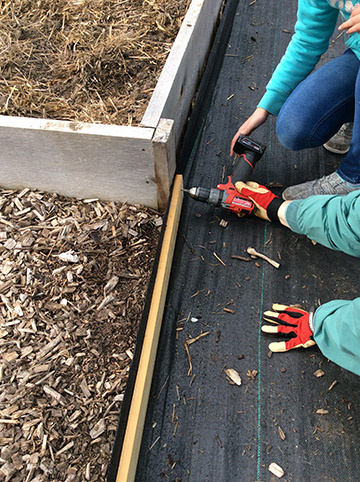
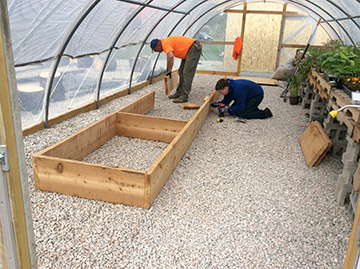
Look at all that STEM in action!
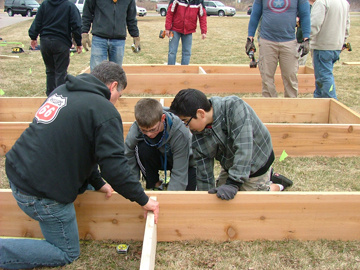

Beds are leveled as they are assembled
After about 3 hours all sixteen 4' x 12' beds were built
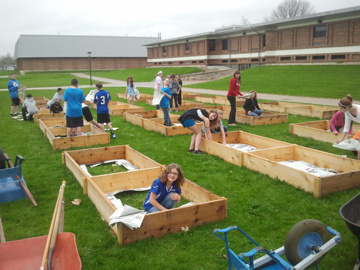
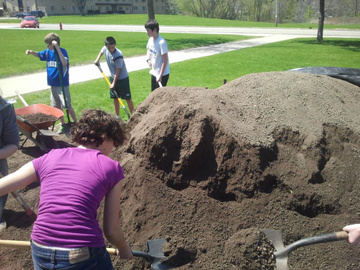
In the next phase we collected weeks worth of newspaper to line the beds. Beds are installed right on the grass- no chemicals or other site prep needed
Now the hard, but always exciting, job of filling each bed with soil, wheelbarrow by wheelbarrow
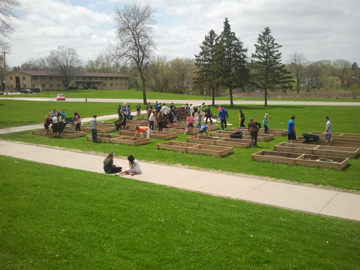
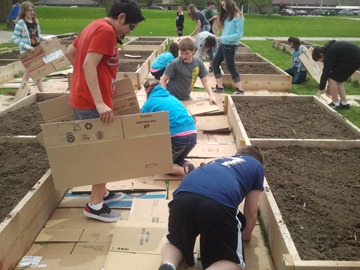
School Gardens are a wonderful community-building activity
Cardboard boxes collected from the food service were first used under the pile of soil and then reused for the paths- right on the grass
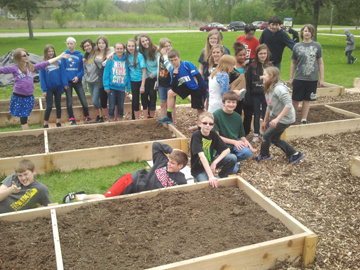
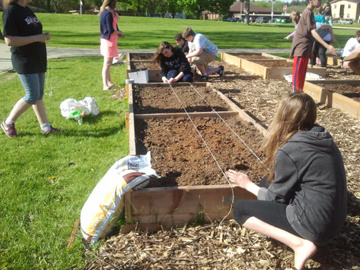
Wood chips dropped off for free from the city- another vital link in a successful garden program
As planting day got closer, students used rulers, string and duct tape to lay out the 1' x 1' squares
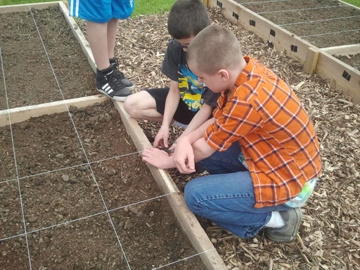
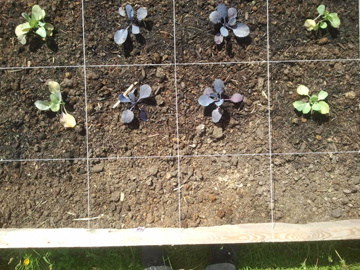
Square foot gardening works well for most vegetables and gives kids a better sense of where to plant
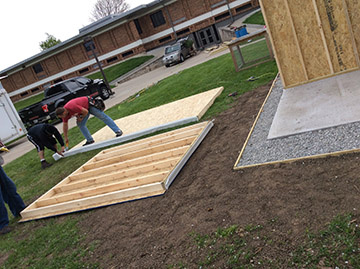
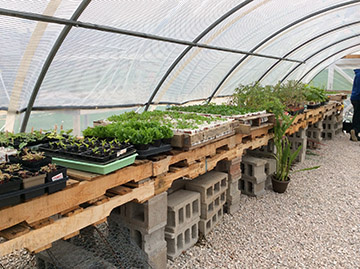
RJ Construction, LLC shows how our community supports RMSG by building our new shed!
Plants hardening in our hoop house donated by the wonderful folks at The Greenery
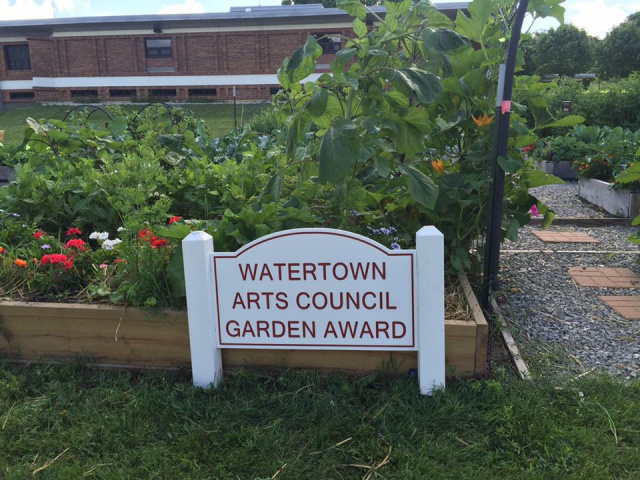
Not only does RMSG feed our kids and community, but it is award-winning!
The finished product
(Unless we add more...)
Addressing Food Security
RMSG produce helps out our community seniors
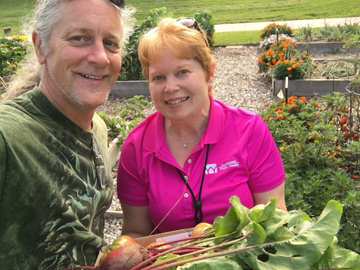
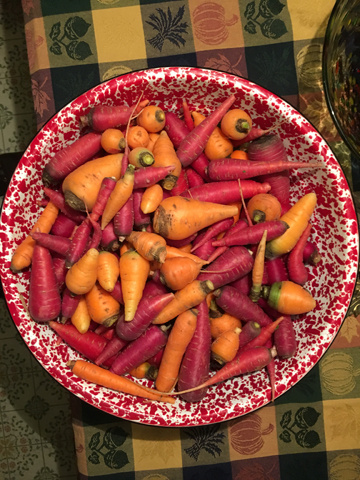
We worked closely with our city's health department and the Get Well Watertown initiative which serves the Senior Center and Meals on Wheels
A dedicated Susan Wollin, from the city health department, kept the connection strong between RMSG and the senior lunch program - which serves two counties - and forty 'Meals-on-Wheels'
RMSG produce feeds our most vulnerable citizens during the summer
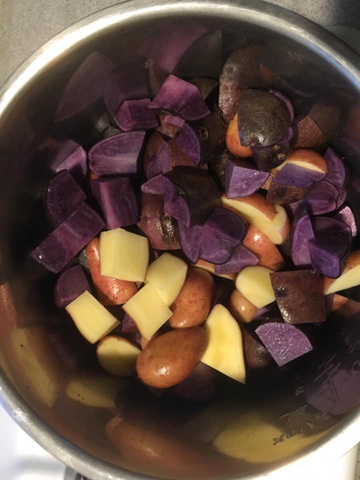

Many hundreds of pounds of food have been harvested for school lunches over the past five years as well as given to those facing food insecurity in our community
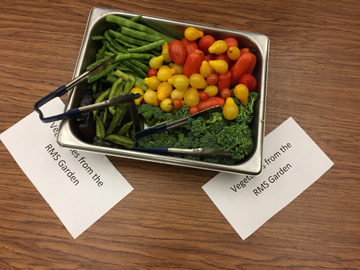
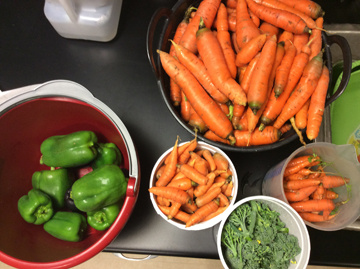
Students recognize the food they've grown and harvested and they EAT IT because they GREW IT

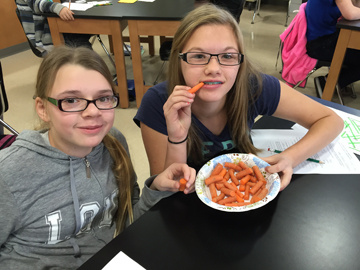
We put out bowls of carrots that are too small for the kitchen, but perfect size for snacking
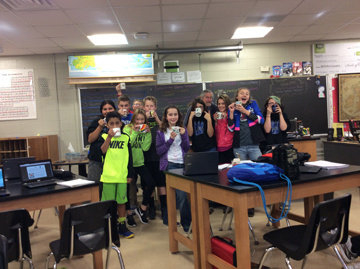
Students take me up on the offer to steep and sip herbal tea during class
And just like kids who garden, kids who drink healthy teas become adults who drink healthy teas !
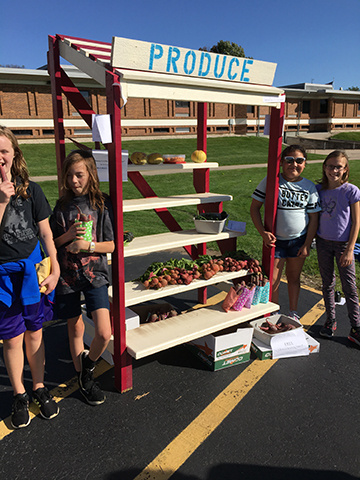
Students built a produce stand using a generous grant in spring of 2019 and on 24 September 2019 it saw its first action!
Students sold and gave away golden beets, peppers, Swiss chard, melons and squash to parents, staff and students
Alternative Garden Techniques


Community participation is vital for successful school garden installation and maintenance
After hours of prep, the vertical garden phase was in place
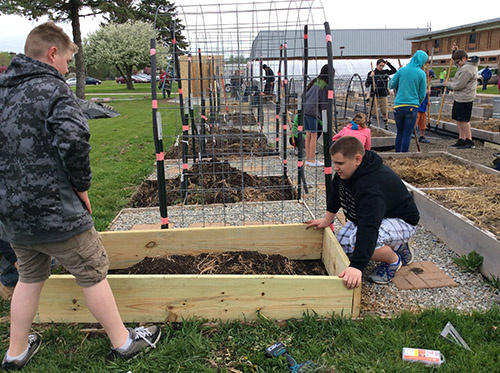
When an edible vertical garden doubles as a school sign it's a win-win!
This idea of re-purposed milk cartons won a $1000 grant award from Carton-2-Garden
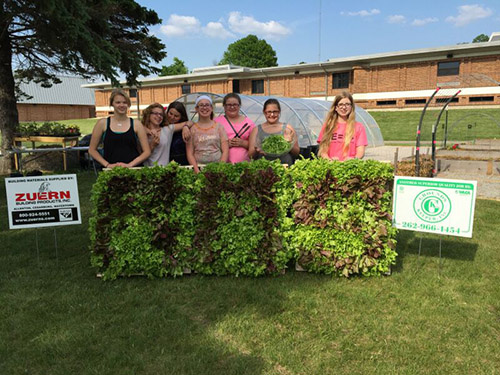
Vertical gardening along with raised beds, straw bale planting and Hügelkultur are among the techniques we've used with great success
Roof Water Collection System
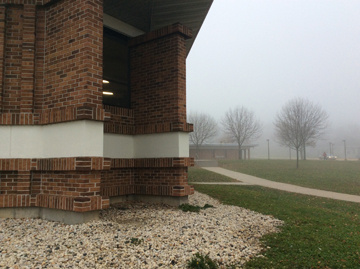
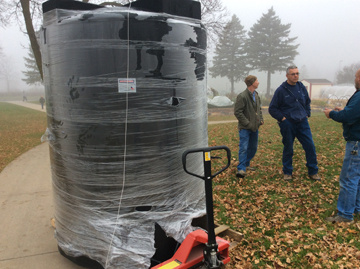
One of our larger grants paid for an 1150 gallon rain water collection tank
The middle school building design has the perfect nook for it
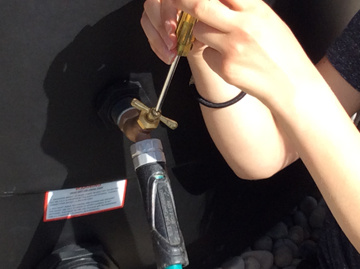

Students attached the spigot and the hose
Our first objective was to fill the 120 gallon 'spot watering troughs'

Garden Features
We plan features to make your yard healthier and more beautiful with LESS mowing!
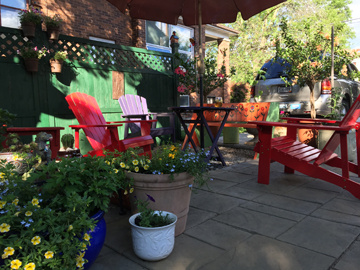
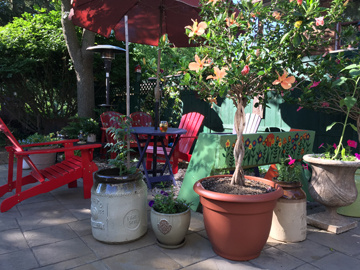
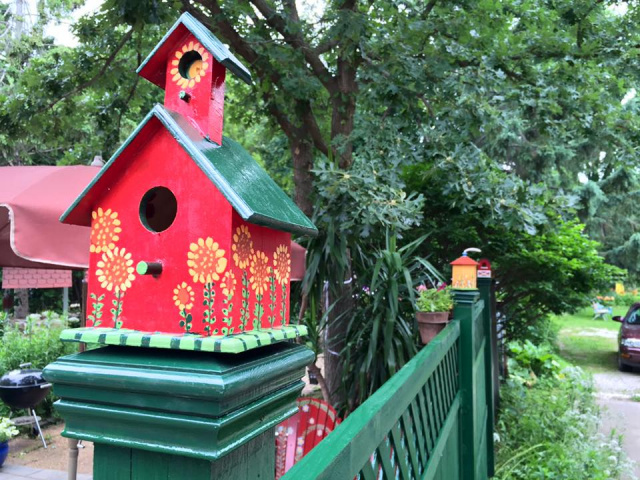
Create a welcoming space on your patio with color and plants
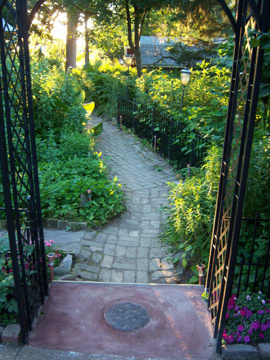
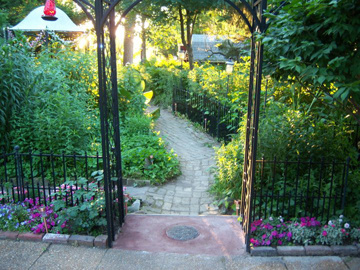
Our gardens are designed to create a 'room' atmosphere- and many of or plants are edible and/or provide food for pollinators
Below are "before" photos of the area after removing the sod and the initial placement of reclaimed bricks
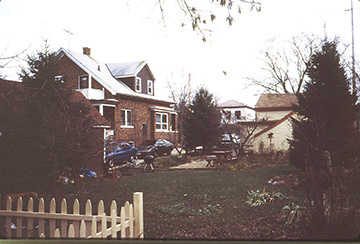
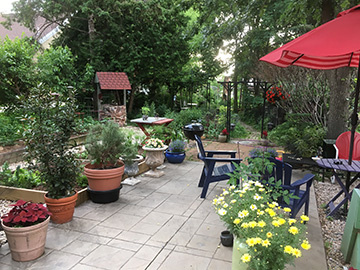
The picture on the left was taken in early on in the process of reclaiming our gardens. The one on the right is 25 years later
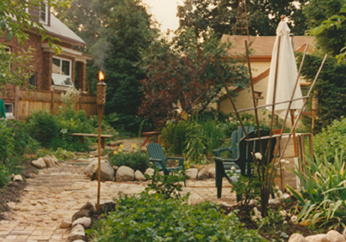
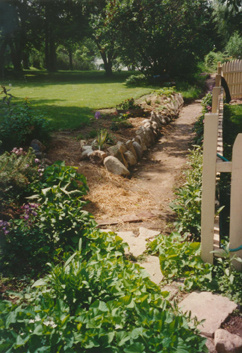
Simply moving plants that you already have can make the landscape fill in a bit quicker
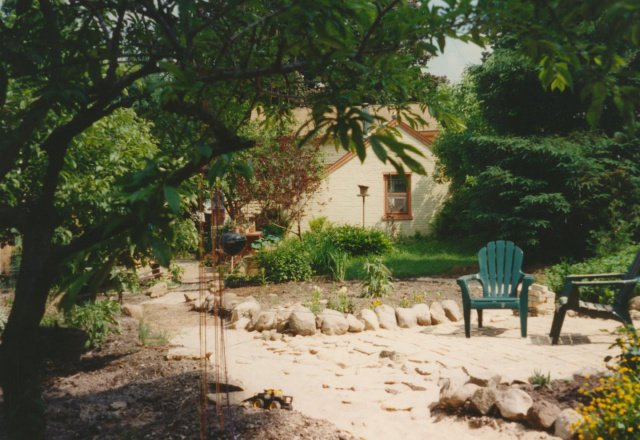
All of the rock and brick were reclaimed for free from local sources, replacing the monoculture of lawn grass that dominated our property
Renovating your property doesn't have to cost a fortune- especially if you rely on our experience help plan it and you're willing to put sweat equity into the project
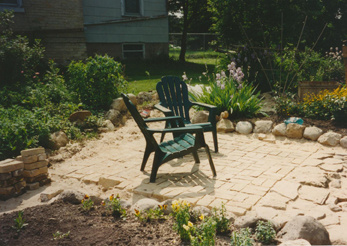

The brick patio is now covered with a gazebo the supports hop plants, giving a natural and clean canopy for shade
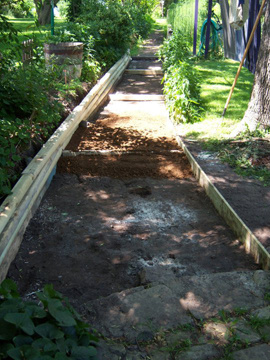
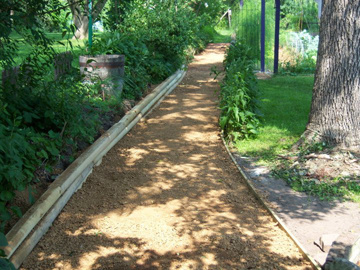
We can create attractive solutions to reduce mud in heavy-traffic areas of your yard while allowing water to percolate down to where its needed
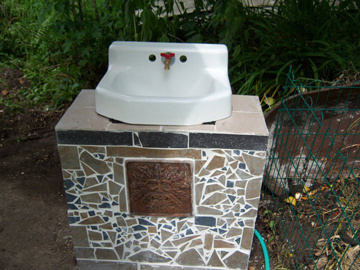
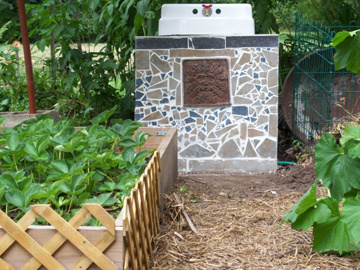
This is a working garden sink made from reclaimed materials and most of it was free

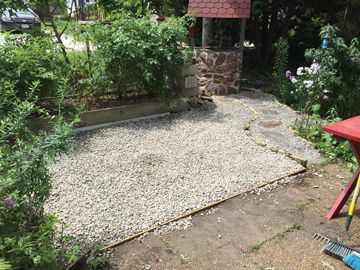
This area was to be the site of our summer kitchen, complete with a wood-fired bread oven
Raised Bed Herb Garden
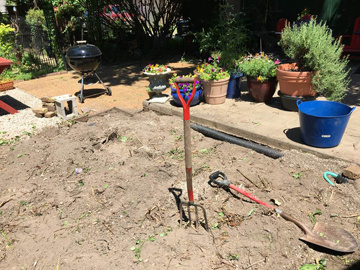

The area is prepped by removing a lot of great plants- which were given away for naturalizing someone else's property
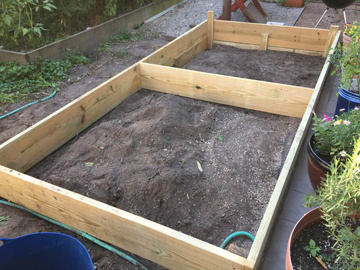
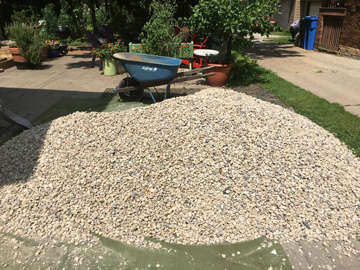
The lumber is cut to size, laid out and fastened
The corner 2x4's were cut to points and hammered into the ground and used for leveling
The paths are also leveled and the excess soil shoveled into the bed so there was no need to bring soil from offsite
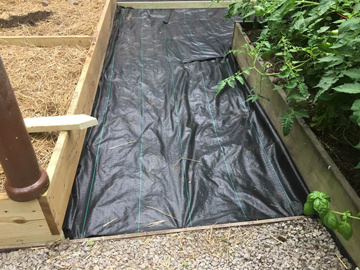
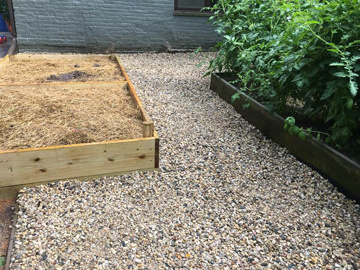
Once the paths are ready, high quality landscaping fabric is installed, stapled down and covered with 3"- 4" of washed stone
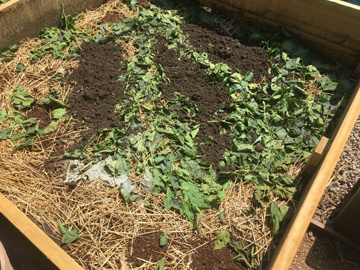
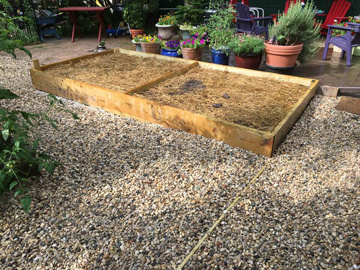
Since we decided to not plant right away, organic matter (clean straw, leaves and branches from the yard) is layered in - a technique some refer to as lasagna
Allowing time for any 'weed' seeds to germinate and planting the following year reduces most unwanted plants. Any that do are pulled as they emerge
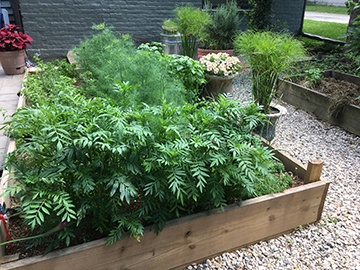
16 July 2019 - The culinary garden is going strong with onion, basil, lettuce, kale, sage, oregano, thyme, lavender, anise hyssop and bouquet dill
Got Pollinators?
Regenerative Installations that Encourage Rewilding, Healthy Land Use and
Attract Pollinators & Wildlife
Fall 2018 Landscaping Project - City of Madison Residence
See the Plant List and Photo Reference created for this Project
Our clients built a beautiful home that featured a spectacular view of a naturalized area around a retention pond
Unfortunately the subdivision expanded and they lost the natural feel of the land
There was also a fair amount of erosion on their heavy clay soil
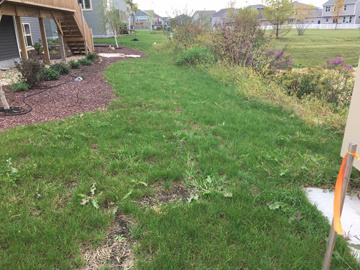
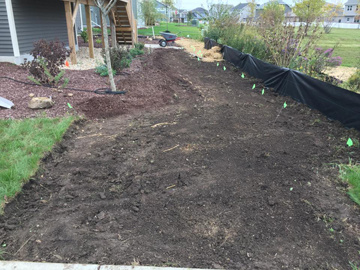
We don't use industrial herbicides for many reasons so we removed the sod using a sod cutter
The erosion fence was not really needed, but better safe than sorry
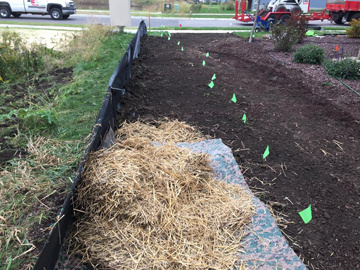
PhenoCulture Wisconsin subcontracted for large flagstone to be installed
The green flags mark where the flagstone walk will be laid


The homeowners wanted to attract more pollinators to their property so we seeded with an 80% forbs (flowering plants) and 20% grass mix
The seed was carefully broadcast to create a lower-to-higher transition to the retention pond
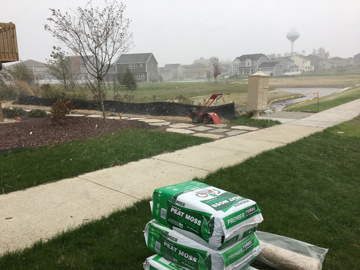

No industrial herbicides are suggested for any projects, but time was a factor so we opted to remove the sod and amend the heavy clay soil by lightly tilling in some organics
Mixing seed and live plants is quite economical compared to using using only plants, so we typically use both in our installations
Spring 2019 Prairie Dropseed and a variety of forbs were planted near the stone path
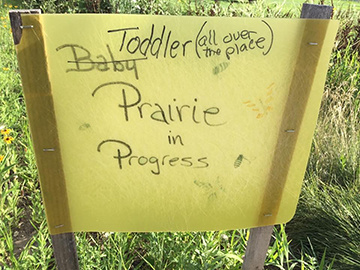
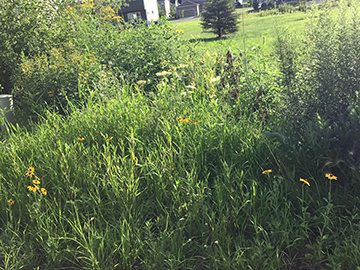
Neighbors looked on with interest at what was being being done on the property, so the owners made a sign introducing them to their 'baby' prairie - which is now a 'toddler' prairie!
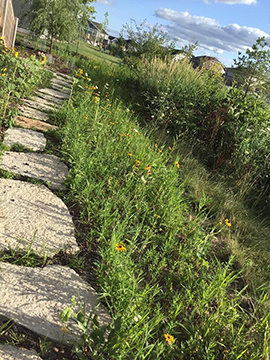
The large flagstone path is filling nicely with wild thyme and it's already showing some colour in its first season (30 July 2019)
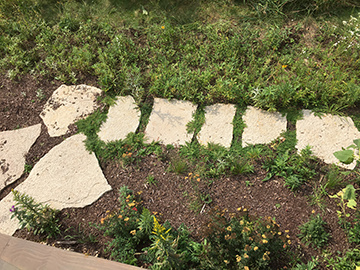
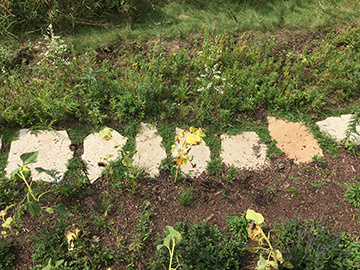
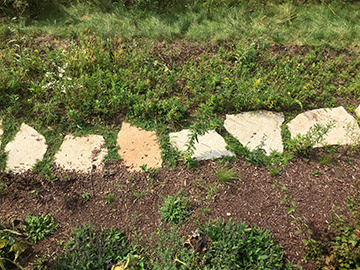

32 more live plants including Mountain Mint, Turtlehead, Wild Iris and Prairie Spiderwort planted 20 September 2019
Removing any flower buds, especially if they were bearing seeds in order to give the plants as much energy as possible going into winter
This is the view from the clients' deck
We' get great results using Prairie Nursery near Westfield, WI
Municipal Native Rain Garden Project
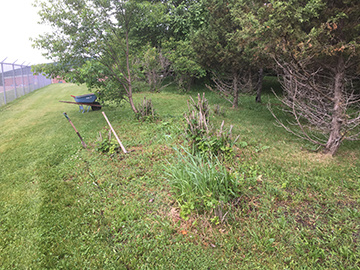
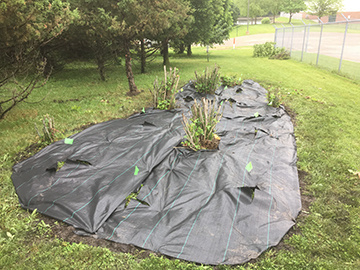
First prepped the site where the rugosa were being moved offsite
There was a bed built here years ago, but the only plantings left are some sad High Bush Cranberries so it was suggested that they be left because they provide food for wildlife
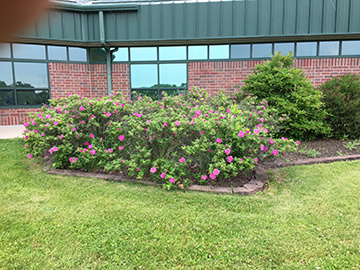
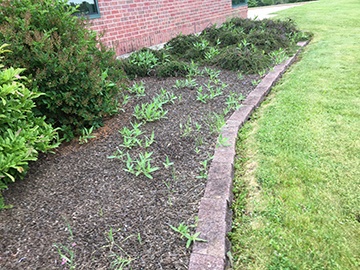
This is the site that is being replaced with water tolerant natives
There are plans to redesign the bed itself, but for 2019 the pavers and shape will remain as is
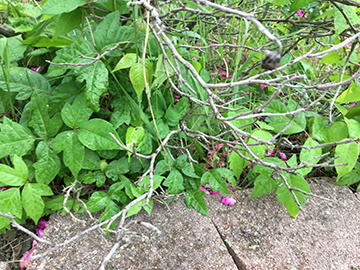
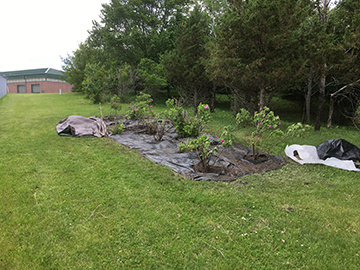
Digging out the rugosa was not easy especially when dealing with healthy vines of poison ivy - which was found on both sites and disposed of without spraying chemicals
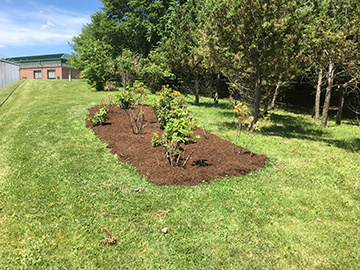
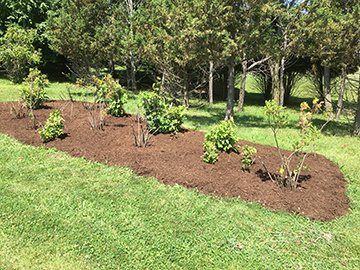
This is a case of making sure that your plants are well watered. There's hope for most of these transplanted rugosas, but they'll have a far better chance if they're watered often

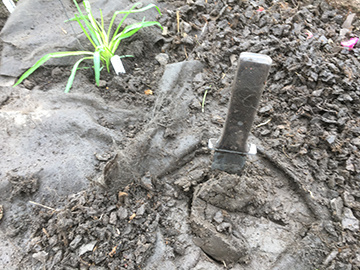
The roses were removed and dealing with the not-so-appreciated shredded rubber tire mulch was a little problematic
I have real concerns about the heavy clay soil and no real way for the soil to improve
After discussion, it was decided to leave it, but to apply a natural wood mulch after the plants gained a little height. My hope is that the wood will break down and add nutrients via a 'compost tea' as water percolates through
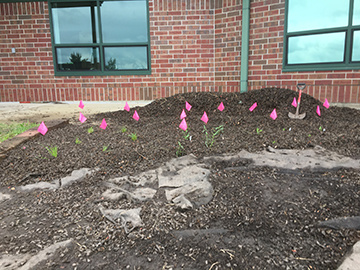
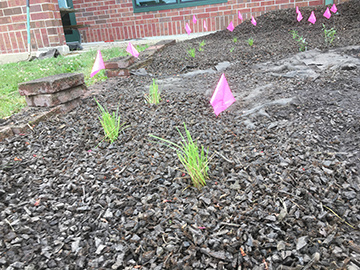
The first plants installed are Fox and Porcupine Sedges to create a gradual increase in height
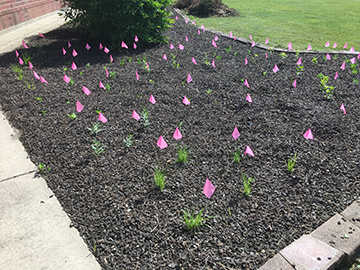
Seventeen species of native plants were installed 19 June with another five species being planted in the fall 2019. This picture was taken right after transplanting
All in all, 140 plants found a new purpose as a rain garden


These shots were taken 24 July - The plants are doing well!
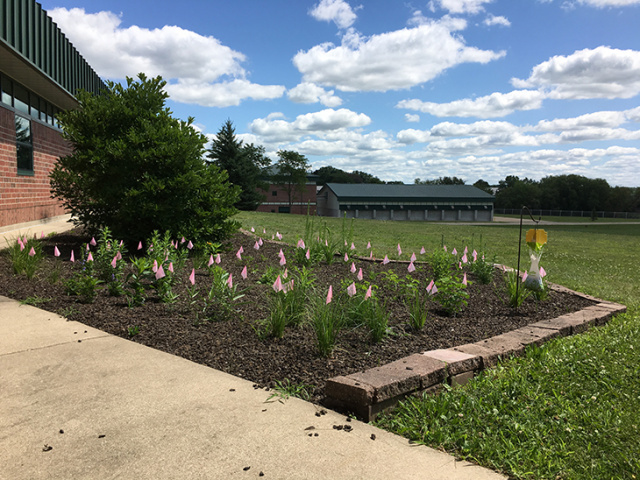
Click Here to see the plants used in this installation
Community Micropark
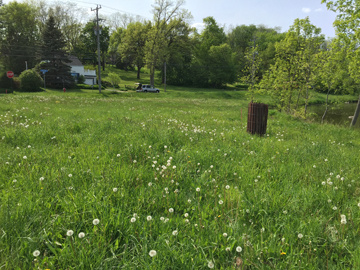
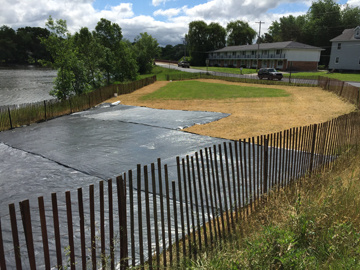
This parcel of city-owned land was under-utilized, too small to develop, had to mowed by city crews and was considered an eyesore to some
The first step in site prep was fence off the area and to hand spray a solution of salt, horticultural acetic acid (strong vinegar) and dish soap on the mowed field
Plastic was then used to 'solarize' the area, killing the reed canary grass and other undesirable plants
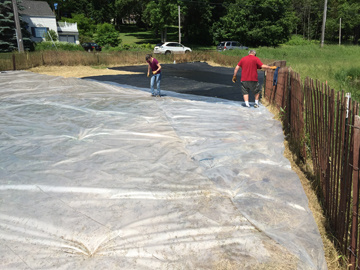
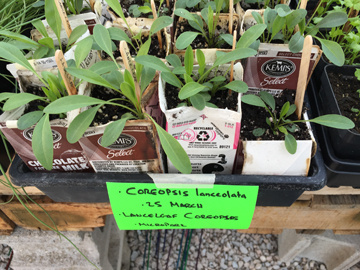
We tried both black and translucent plastic as an experiment
Middle school students purchased seed and started some native plants for transplanting
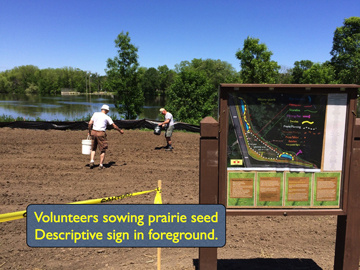
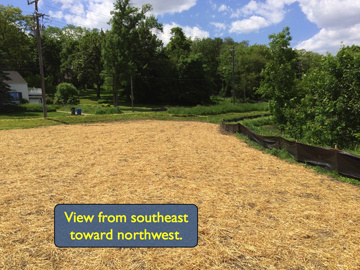
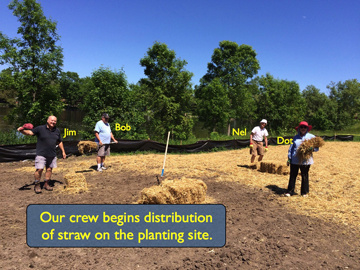
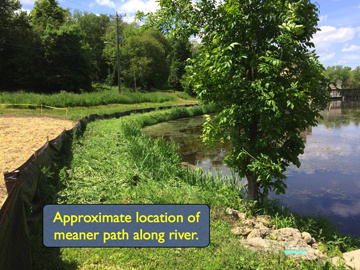
Once the grass was effectively killed off, the plastic was removed and the area seeded- mostly with hand-collected seed from local prairies
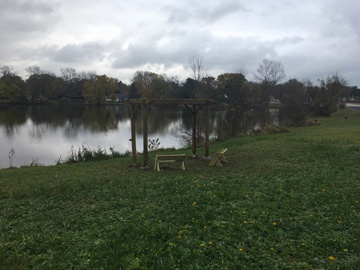
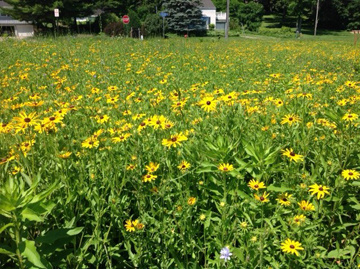
RMSG donated a small pergola and volunteers built benches along the planned walking path
Though this process takes longer to see full results, it's healthier for the environment
PhenoCulture Wisconsin would love to help more communities take the initiative and create landscapes that are not only healthy and beautiful, but will save money in the long run
Please support this Micropark initiative by liking the Facebook Page
Want to Urban Homestead? Building a coop and run?
We can help you plan!
We started with a pre-fab coop from a local farm store which was painted with the same color scheme as the house and mounted on a 4"x 4" frame set two feet deep
Galvanized fencing was buried to keep out as many vermin as possible

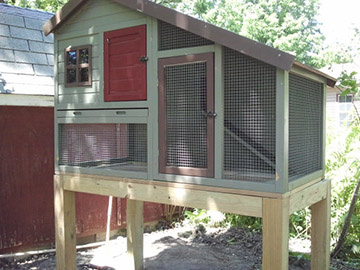
Inexpensive used concrete pavers were purchased from a neighbor and laid around the perimeter to further reduce predation
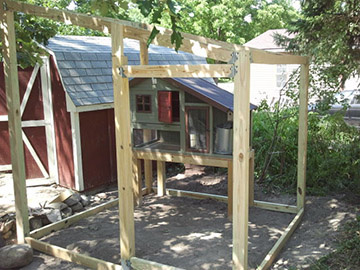
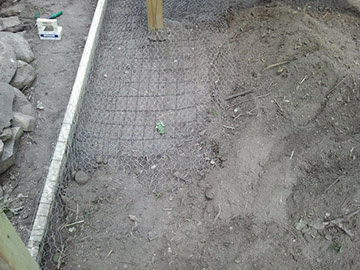
A 9'x 9' run is framed in and ready for chicken wire fencing

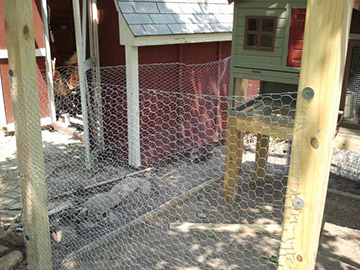
The wire is stretched and stapled in place
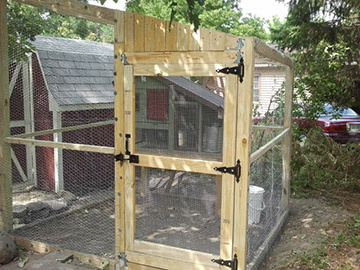

The door is built from the same treated lumber and mounted using reclaimed hardware
Building the bunny hutch

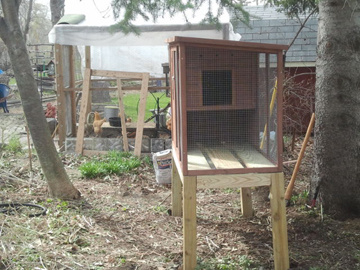
We purchased a pre-fab rabbit hutch from a local farm store
There frame is built from treated lumber and set on 4"x 4" posts set two feet in the broad with quick-set cement
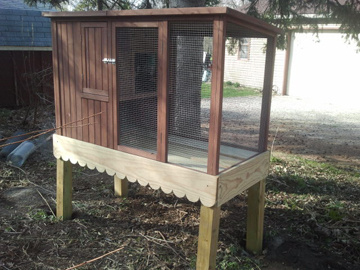
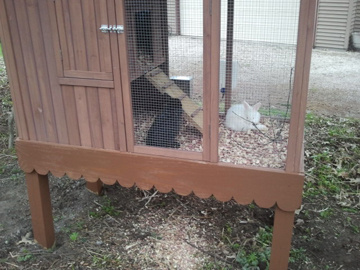
In order to be able to remove the hutch if needed and to provide as much security as possible, an apron made of 2"x 6" was scalloped and the hutch nests snuggly
The frame is painted using the house trim paint color
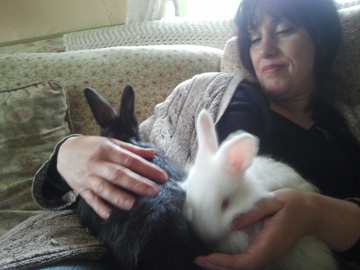
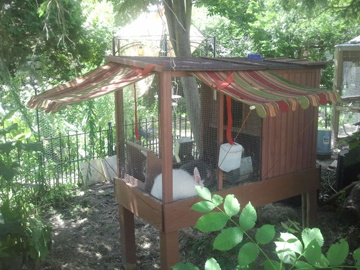
The Angora bunnies arrive!
Awnings are installed to provide much needed shade
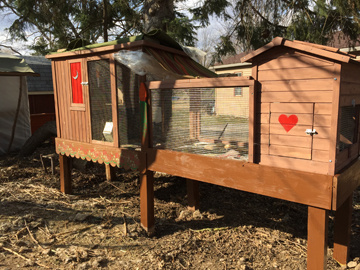
An addition was included when the rabbits reached full size
Backyard Bees
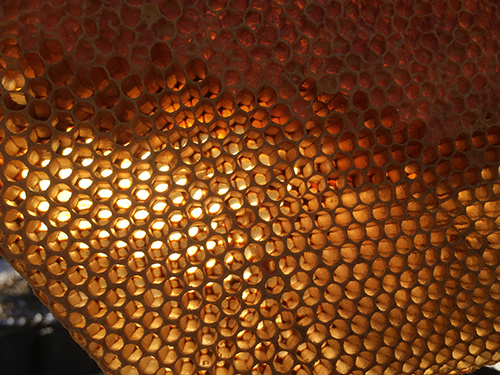
Bees, and most social pollinators, are fascinating. Hours can be spent just watching the coming and going of the colony
Humans can learn A LOT from the honeybee
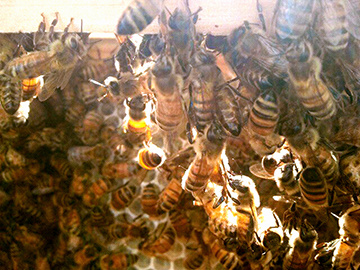
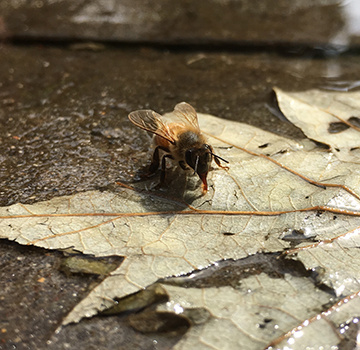
Bees are extremely communicative. Watching the 'waggle dance' is amazing!
Not only do they tell all of their sisters where flowers are, they will let the colony know about water
It takes about 556 worker bees to gather 1 pound of honey from about 2 million flowers
It takes around 55,000 flight miles to make one gallon, or 12#, of honey
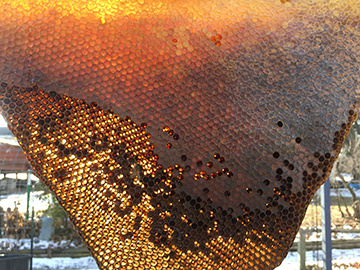

We only collect honey if we lose the colony- and this happens most often during winter
Climate change, habitat loss and industrial chemicals are decimating the honeybee populations around the world
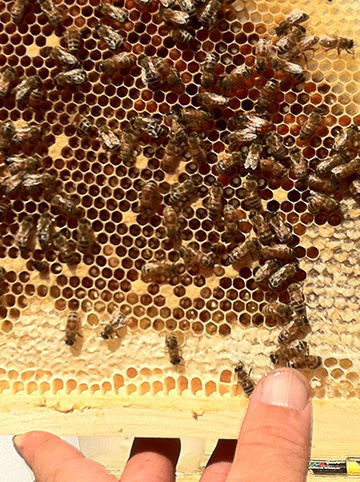
The average honeybee will make only 1/12 of a teaspoon of honey in its lifetime - which is about 6 weeks during the summer
Honeybees pollinate almost a third of all the food that Americans consume
They pollinate 85% of all flowering plants and are responsible for 90% of all pollen transfers on our orchard crops
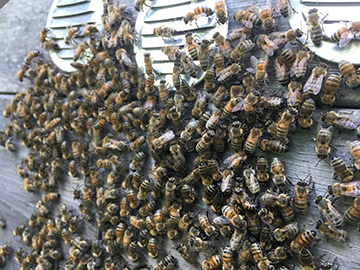
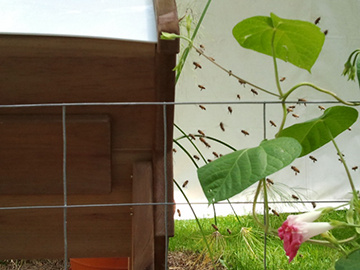
When it gets really hot or if the hive is ready to split or swarm they can be found 'bearding' on the hive
The bees that we see flying are foragers, the oldest bees in the hive, and during the last two weeks of their lives they gather nectar, pollen, water, and propolis
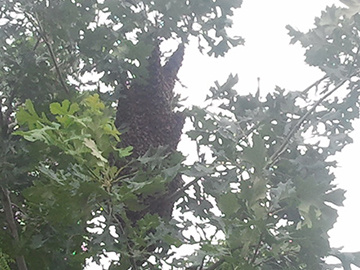
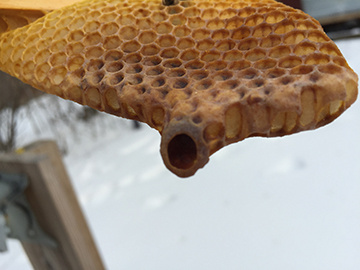
Swarms are what we see when the old queen leaves the hive, taking around half of the workers with her. Swarming bees are typically quite mellow so never spray or kill a swarm of bees! They're creating a new colony!
Queens are substantially larger than the worker and if the colony collectively decides that it's time to split, they'll make a larger cell. The queen can lay a million eggs during her lifetime
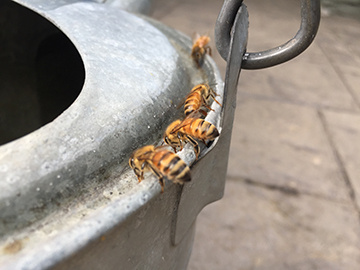
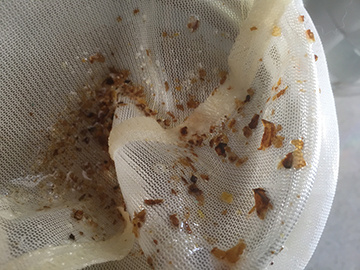
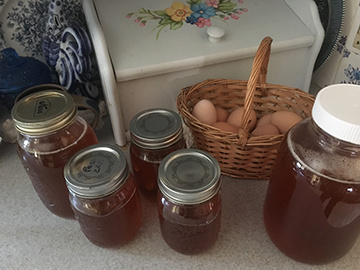
When honey is harvested it does require a few steps to get it ready for the honeypot
We can show you some of the tricks we've learned
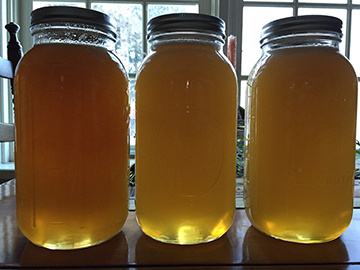
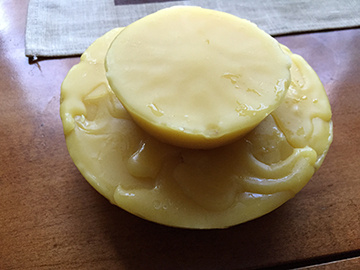
We collect the propolis and pollen along with the honey and wax
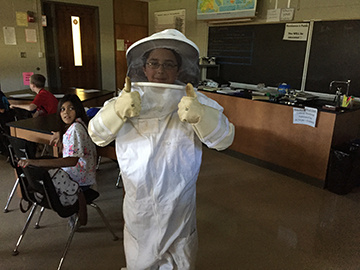
Kids can be taught to love the honeybee
Arrange a presentation today!
Cafeteria Recycling Program
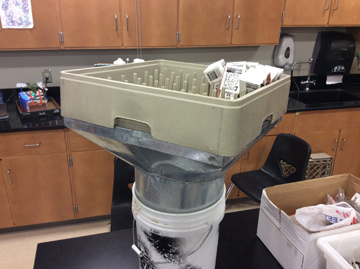
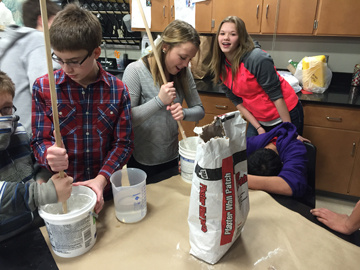
We designed the funnel from sheet metal to fit a five-gallon bucket and a tray
The dishwasher tray was perfect for draining out the milk cartons, saving time and water since it eliminated the need to rinse the cartons
Students mixed plaster of Paris for the base to hold the signage
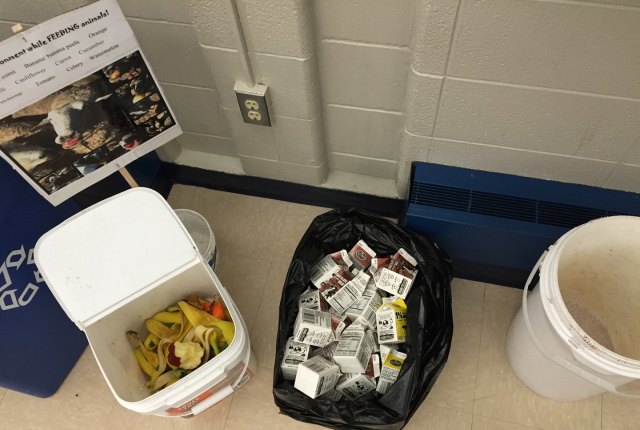
A trial run before the program going full fledge

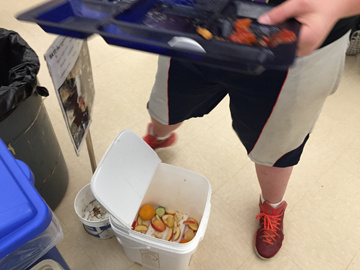
With staff support, students caught onto following the new procedure quickly
Between October 2016 – December 2017 our middle school cafeteria recycling program captured organics that were kept from the waste stream
12,030 pounds of milk which was donated to a local farm
7563 pounds of produce which fed sheep and pigs at a local farm
Over 63,000 milk cartons which were recycled by the city
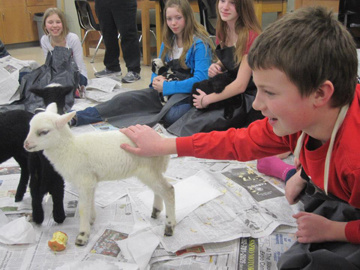
Lambs from Asylum Farm that we offered our organic "waste" to brought into school for a visit
I had never seen this special needs student smile before
*We have been researching how to use the dairy, which is mostly chocolate milk proved to be too sweet to feed to livestock, to turn into fertilizer and biofuel
If any school or district out there would like to take this idea further, please contact us
phenoculturewisconsin@gmail.com
©2023 PhenoCultureWisconsin